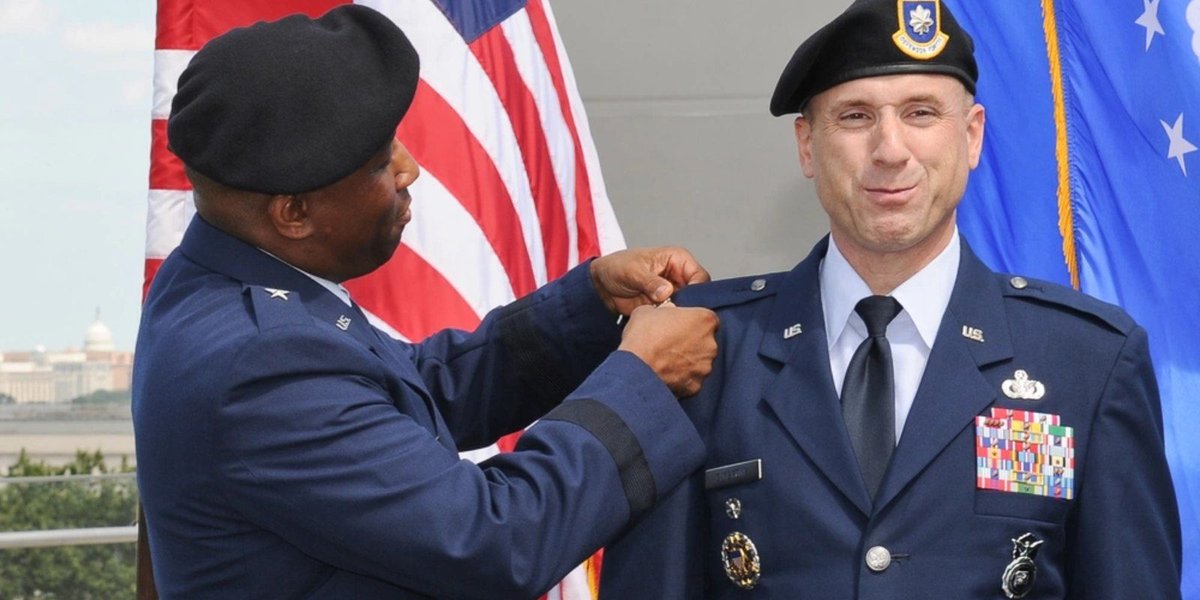WHAT DOES IT TAKE TO GET AN AIR FORCE PROMOTION?
By Anna Kim

Advertisement
The three levels of the Air Force are E-1 to E-4, which are Airmen, E-5 and E-6, which are non-commissioned officers (NCOs), and E-7 to E-9, which are senior non-commissioned officers. With Air Force ranks separated by these three levels, getting an Air Force promotion is not a simple task; however, with hard work and dedication, anything is possible.
Air Force personnel may dream of going from an entry-level rank and climbing the ladder up to a high-ranking grade, but this will require more than 20 years of experience, and one must exhibit exemplary skill and dedication for a rank increase.
Suggested read: Temporary Promotion Army Policy Extended Through 2023
All About Air Force Promotions
Air Force promotion requirements are different for the three ranks, and the Air Force promotion timeline also depends on which rank you fall into.1. Air Force Enlisted Promotions: E-1 to E-4 Airmen
The first level of promotion is from E-1 to E-2. E-1 graduates have undergone basic military training and have learned military skills and Air Force customs and standards. Once they graduate and meet the expected Air Force performance standards, they are promoted to E-2. In the E-2 rank, Airmen become specialized in specific jobs based on their interests. E-2 Airmen will be promoted to E-3 Airman first class once they have undergone 10 months in grade. Generally speaking, it takes roughly 16 months to be promoted to Airman first class from E-1. As first class, the level of responsibility is much higher, as they also need to set an example for newer Airmen. To be promoted to Senior Airman E-4, Airmen first class must have 3 years of time in service (TIS) and 20 months of time in grade (TIG) or 36 months of TIS and 20 months of TIG. One must demonstrate the necessary military experience and leadership skills, which corresponds to being a good example for others to follow. The promotion to Senior Airman is important, as it will set the stage for the responsibilities needed to become an NCO.Advertisement
2. Air Force Officer Promotion: E-5 and E-6 Non-Commissioned Officer
To be promoted to an E-5 Staff Sergeant, one must have 3 years TIS and six months TIG, compete in the Weighted Airman Promotion System, have a “5” skill level, and complete Airman Leadership School. Staff sergeants hold a supervisory role. To be promoted to an E-6 Technical Sergeant, one must have 5 years TIS and 23 months TIG. One must also have a “7” skill level. On top of being a supervisor, Technical Sergeants have technical responsibilities and must help their subordinates succeed.3. E-7 to E-9 Air Force Senior Non-Commissioned Officer
The process of being promoted to an E-7 Master Sergeant is similar to that of a Staff Sergeant and Technical Sergeant, except the minimum TIS is 8 years, and TIG is 24 months, along with having a “7” skill level. A Master Sergeant serves as a craftsman but with more leadership and a bigger technical perspective. A Master Sergeant becomes promoted to an E-8 Senior Master Sergeant after 11 years TIS and 20 months TIG. However, only 2% of the enlisted workforce is allowed to be in the E-8 grade; therefore, the process of being promoted is extremely competitive. Points from the Weighted Airman Promotion System are taken into consideration during the promotion process, and a Central Evaluation Board is also involved. While only 1% of enlisted Air Force personnel can be in the E-9 grade, a Master Sergeant can be promoted to an E-9 Chief Master Sergeant once they have served 14 years TIS and 21 months TIG. Points from the Weighted Airman Promotion System are, again, taken into consideration along with the input of a Central Evaluation Board.4. Chief Master Sergeant of the Air Force
The highest rank in the Air Force is Chief Master Sergeant of the Air Force. This rank is responsible for giving directions to the enlisted corps. They are chosen by the Air Force Chief of Staff.Advertisement
Air Force Promotion Ceremony
Ceremonies are held for an Air Force promotion in order to make sure that military personnel are getting the recognition they deserve. Commanders and supervisors hold responsibility for organizing the ceremonies. Generally speaking, promotion ceremonies are held indoors and include the following:- Opening narration.
- Musical honors.
- National anthem.
- Invocation.
- Pinning of insignia.
- Oath of office.
- Honoree remarks.
- Closing narration.
- Air Force song.
Changes in Promotion Requirements
Starting on January 1, 2023, a new policy now considers advanced academic degrees for promotions to Major and Lieutenant Colonel. This change is to ensure that service members have the right qualifications. In fact, the current general officers of the Air Force have had the lowest rate of advanced academic degrees in over 30 years. Frank Kendall, Secretary of the Air Force, said, “We need leaders and supporting staff throughout the [Department of the Air Force] at all levels who have deep expertise in emerging technologies and their applications to military operations.” This opens the door for more people with college experience under their belt to join the USAF in a more meaningful and advanced capacity.One Step at a Time
While the time and effort it takes to climb up the ranks for an Air Force promotion is not easy, it does pay off in the end. It’s important for Airmen to demonstrate the Air Force standards when both on and off duty. While the minimum TIG and TIS must be met, pushing yourself and going beyond just the minimum requirements is a big step toward gaining future promotions. Read next: Navy COOL Preps Sailors for Promotion and Civilian CareersThe appearance of U.S. Department of Defense (DoD) visual information does not imply or constitute DoD endorsement. Photo by Eboni Everson-Myart Army Multimedia and Visual Information Directorate
Written by
Anna Kim
Veteran Benefits Specialist at MyBaseGuide
Anna Kim is a Contributing Writer at VeteranLife.com.
ExpertiseVeteran BenefitsVA HealthcareMilitary News
Anna Kim is a Contributing Writer at VeteranLife.com.
Expertise
- Veteran Benefits
- VA Healthcare
- Military News
Advertisement
SHARE:



